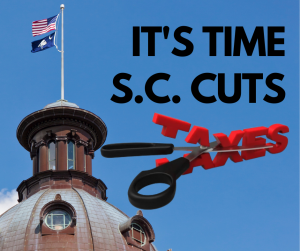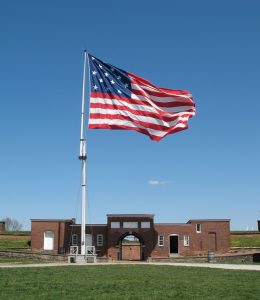
The greatness of America’s grand experiment in self-government is that it is based on human reality. Our nation’s founders understood the essence of human nature, which is imperfect and incomplete, and constructed our Constitution accordingly. The United States Constitution establishes a republican form of government within a federal system. This means that the rule of law will prevail through elected representatives (republic) and that power will be de-centralized through being shared between the several states and the United States (Federal) government. Such a Federal structure is the foundation of American freedom, and is the basis of limited government.
Unfortunately, too many political leaders in our time, at both the Federal and the state levels, use the terms “Federal” and “National” interchangeably. This could not be more inaccurate or dangerous to liberty in our nation. A Federal system shares power between various political entities (states and the nation), beginning at the individual level and working upward. This means that the Federal government is empowered by the states, and that the states have governments that are empowered by the people. Thus, in the truest sense, power in the United States is rightly recognized as flowing from God to the people, from the people to the states, and the states to the United States. This circumvents the human tendency toward centralized power, which is the essence of tyranny.
In addition to flipping the power paradigm on its head, since most nations of the world at the time of America’s founding believed power flowed from God to the monarch and the monarch to the people, America’s federal system protected natural rights. The founders recognized that governments are made up of the same fallible people that populate the larger society; therefore, they sought to restrain their power through checks and balances and various jurisdictions. This means that the three branched structure of the Federal and state governments checks and balances the primary functions of those governments, thus ensuring that no person or group of people rules unrestricted. Additionally, however, they structured the Constitution to establish certain rights as inalienable and universal, such as the freedoms of speech and religion and the right to keep and bear arms. This means that the Federal Constitution restrains the several states from passing laws that infringe on these rights, ensuring that all Americans, in every state, are assured basic rights and freedoms.
The structure of Federalism, under our Constitution, ensures that the rights of individuals are protected in all states of the United States, and that the Federal government cannot centralize power, thus trampling the states. This balance built further on the concept of checks and balances within the Federal and state governments, adding even more protection for precious American liberties. The modern trend, however, is toward the centralization of power wherein the Federal government is becoming a national government. The concept of a national government is too close to that of a country with a king; in a nationalist government, power is concentrated centrally and flows down from the top. This stands in stark contrast with the quintessentially American notion of power flowing from the bottom up, and is incompatible with the concept of human freedom.
There is perhaps no better friend to the nationalist than a liberal interpretation of the Interstate Commerce Clause of the Constitution. This clause, contained in Article I, Section 8, Clause 3 of the United States Constitution has been misapplied and misconstrued to the detriment of this nation. Originally intended to ensure economic cooperation between the states of the United States, it is been twisted into something totally foreign to the Federal system of limited government. The stretching of the Commerce Clause began in earnest under the Administration of Franklin D. Roosevelt, who used it to justify his substantial Federal overreaches. After threatening to ask Congress to expand the number of seats on the US Supreme Court, ostensibly to pack the court with liberal justices, the Court cow towed to the President’s threats and began upholding such unconstitutional power grabs.
One of the most devastating Supreme Court decisions to the concept of dual Federalism was that of United States vs. Darby in 1941. The Darby Lumber Company located in Georgia was charged with violating an act passed in 1938, signed by President Roosevelt, titled the Fair Labor Standards Act. This act was passed to expand collective bargaining and unionization in all companies engaged in interstate commerce. This caveat about interstate commerce was inserted to expand Federal authority under the Interstate Commerce Clause in Article I, Section 8, Clause 3 of the Constitution. As expected, Darby Lumber appealed to the United States Supreme Court, claiming that Congress had no authority to regulate wages and production within a sovereign state. This had previously been the position of the Court in Hammer vs. Dagenhart in 1918, wherein the sovereignty of state labor laws was affirmed.
Following President Roosevelt’s threats to stack the Supreme Court, however, the justices moved sharply to the left and reversed previous court precedent. Thus, in upholding the Fair Labor Standards Act, the Supreme Court effectively provided Congress unlimited power to regulate all commerce in this country. This because virtually every company, operating in virtually every state, will do some business outside that state’s boundaries; therefore, under the interpretation of the Supreme Court in United States vs. Darby, Congress can control commercial productivity.
In our time, the powers of the Federal government are again being augmented under an even more liberal interpretation of the Interstate Commerce Clause. The Patient Protection and Affordable Care Act of 2009 (aka Obamacare) seeks to use the Interstate Commerce Clause not only to regulate existing commerce in every state in the nation, but to create new markets altogether. This makes even the overreaches of the Roosevelt Administration seem relatively tame. It is time for Americans to stand up to such Federal overreaches and liberal interpretations of the Constitution. The Federal system crafted by Madison and company is being corroded in the name of an initially benign Commerce Clause. We must learn the lessons of history and hold Congress and the Administration accountable for such egregious overreaches that are turning the Federal government into a national government.
Regardless of the US Supreme Court’s ruling on Obamacare this summer, Americans must demand that Congress repeal and replace Obamacare. Failure to do so will place the Federal, soon to be national, government at the helm of healthcare and, by extension, the entire American economy. For those who still love freedom and believe in free markets, this is an unacceptable outcome.





This is probably the most concise, informative and fact filled discourse on the Federal system that I have read in one page. I am making copies to send to my senators, representatives and the Supreme Court justices. Sometimes in written law it’s wordiness obscures the meat of what is trying to be accomplished in that act. This is the case in “Obamacare”. The magnitude of the directional change that this law will take our country, which was founded on a Federalist(Republican) principled foundation, is right into a Socialistic-centralized government! President Obama is using the play book of President Roosevelt concerning the Supreme Court to the fullest,filled with intimation.